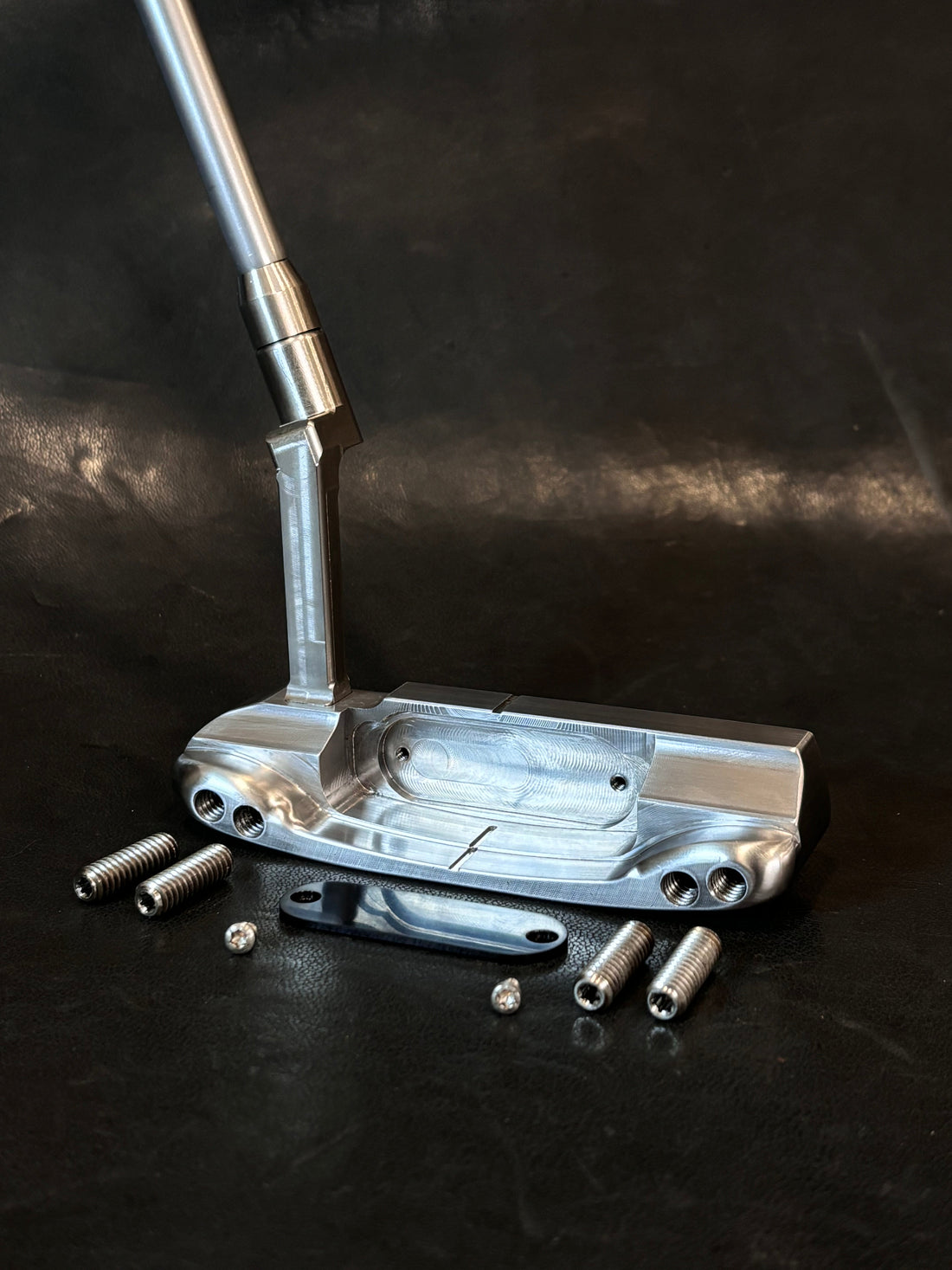How much should my putter weigh?
by Truth Web Design
Golf club and especially putter weights have evolved over the years, with modern advances in agronomy, equipment design and manufacturing and with the advent of performance testing and analytic technologies.
Putters’ head weights were very light in the hickory shafted era, prior to the 1930’s. 275 grams (or slightly less than 10 ounces) was normal for a hickory shafted putter head weight. And with the advent of the lighter weight steel shaft, heads added a little more weight, edging up to 300 grams or so. Then very little changed from the beginning of the modern steel-shafted era (beginning in approximately 1930), until more modern times of the 1980’s and 1990’s. That’s when the equipment industry witnessed a significant shift in putter weights, and putter head weights in particular. A typical putter head weight in the 40’s and 50’s of approximately 300-320 grams (10.5-11.5 oz.) has increased today to 360 grams, 370 and up to 380, 390 or 400 grams or more (12.5 to 14.5 oz or more).
Several factors helped bring about these changes. As agronomy improved the greens and their grasses were cut lower and smoother, and green speeds increased. Early in my career (late 80’s to the early 90’s) there was a big debate about whether a light putter or heavy putter was better for faster greens. One argument was that a heavier putter would impart more energy to the ball, potentially too much, and therefore wasn’t as effective or easy to control distance on faster greens. Many would argue that you needed to add weight to a putter for slower greens, usually using lead tape to add weight to the head.
Players who were used to an older method and style of putting known as a “pop-stroke” where there was more of a wristy action, favored a lighter head that facilitated a quicker, wristier stroke. Think of the greats like Bobby Jones, Arnold Palmer or Gary Player for instance.
Those wristy strokes and lighter putters (usually with higher loft) were well suited for getting the ball up and rolling on the slower, longer grass of that era’s putting greens. However, as the science and profession of putting green agronomy improved, and green speeds and smoothness followed, the design and specifications of modern putters also needed to evolve to allow the golfer to control and better take advantage of the faster, smoother rolling greens.
Manufacturers started testing putters on smoother and smoother surfaces. Ping designed a giant granite surface plate, precisely flat and smooth to test on. Felt became in vogue, akin to testing putts on a giant billiard table. Video was used to capture the effects of putter performance, and robots were designed to mimic a putting stroke, yet be more precise, repeatable and consistent for testing and validation of new designs.
In 1996 my company invested in a putting robot from the California company Golf Laboratories. We used the robot to test and prove the effectiveness of our HOG putters’ technologies. Tom Stites, a colleague from Head Golf and Impact Golf Technology days (prior to running the Oven for Nike Golf), added a counterbalance arm to my robot, so that it swung “through the ball”. We tested using a military-grade, high-speed camera system to analyze the moment of impact and ball roll dynamics. We did this for center hits and miss-hits, measuring the effects of miss-hits on distance and dispersion (or how far off target each putt travelled). This helped us prove our ultra-stiff, zero-torque and significantly more stable “Totally Oversized” HOG putter was more consistent, more forgiving and more accurate as a result.
Not coincidentally, the HOG putter was ahead of its’ time in head weight as well. The original HOG 1001 putter’s head weight was 372 grams, which was approximately 40 grams heavier than competitive putters of the day. The HOG head weight didn’t “feel” heavier though, due to it’s larger volume (yet thin and light) grip and more massive sized shaft.
In combination, the HOG’s ergonomics made it swing and feel quite traditional. This wasn’t an accident, we spent countless hours in R&D on that putter and kept refining and making new versions over the following decade. We had great success on Tour, rising as high as the #2 most used putter in play on the Senior PGA Tour, and enjoyed a total of 11 wins and use by over 80 players including a dozen hall-of-fame players.
Then in the early 2000’s Hank Haney and Travis Fussell, who had a studio at Hank’s original Golf Ranch, helped introduce me to the SAM Puttlab testing equipment. Hank had met the pioneers of this technology over in Germany and helped them bring in over to the US. I was the first US manufacturer to take the SAM PuttLab out to a PGA Tour event, going back-to-back weeks at the Byron Nelson and Colonial tournaments using our Tour credentials and access they provided, testing with many of the best putters in the world. We’ve been using it ever since.
The SAM PuttLab equipment helped settle that long standing argument over which was better for faster greens, a heavier head or a lighter one. And it did so, so much more. Using ultrasound technology from the medical fields, the SAM equipment consists of a triangle of small transmitters attached to the putter shaft and a receiver sitting nearby consisting of three microphones in reverse triangulation to capture the signals from the putter while in motion during the stroke, at and after impact with the ball.
This gave us extremely precise data sets, seeing many of these details for the first time. One of the discoveries I immediately noted was that a heavier head tends to slow down and smooth out a player’s stroke. And it validated what we already knew: that a heavier head also delivers more consistent energy transfer to the ball. In combination, these provided the golfer with a more consistent, reliable, repeatable putter that performs better on today’s faster greens.
Of course there are limits to how heavy one’s putter should be, and a whole host of other factors that go into that equation. The length of the putter, the shaft makeup and its specifications, the grip size and weight, even the design of the putter head itself, they all matter. And of course, the golfer’s setup, stance and stroke and personal preferences are important too. We can measure, record and analyze all those factors in a putter fitting session using the player’s existing putter as a baseline, and then show how modifications or changes or possibly a new more modern putter can help improve their putter performance, resulting in increased confidence and enjoyment on the greens. We believe that’s a perfect recipe for success and “worth its weight in gold!”
About the author: David Billings is a 35-year golf industry veteran, has been credited with 19 US and International Patents on his Golf Club designs and technology inventions, and is widely recognized for his pioneering designs, technologies and work in custom fitting and adjustable technologies, including club weight adjustability.
The SAM PuttLab and David Billings’ modern and locally-made MACHINE putters can be found, tested and fit by Travis Fussell at Integrity Golf Performance in Frisco Texas, by appointment.




